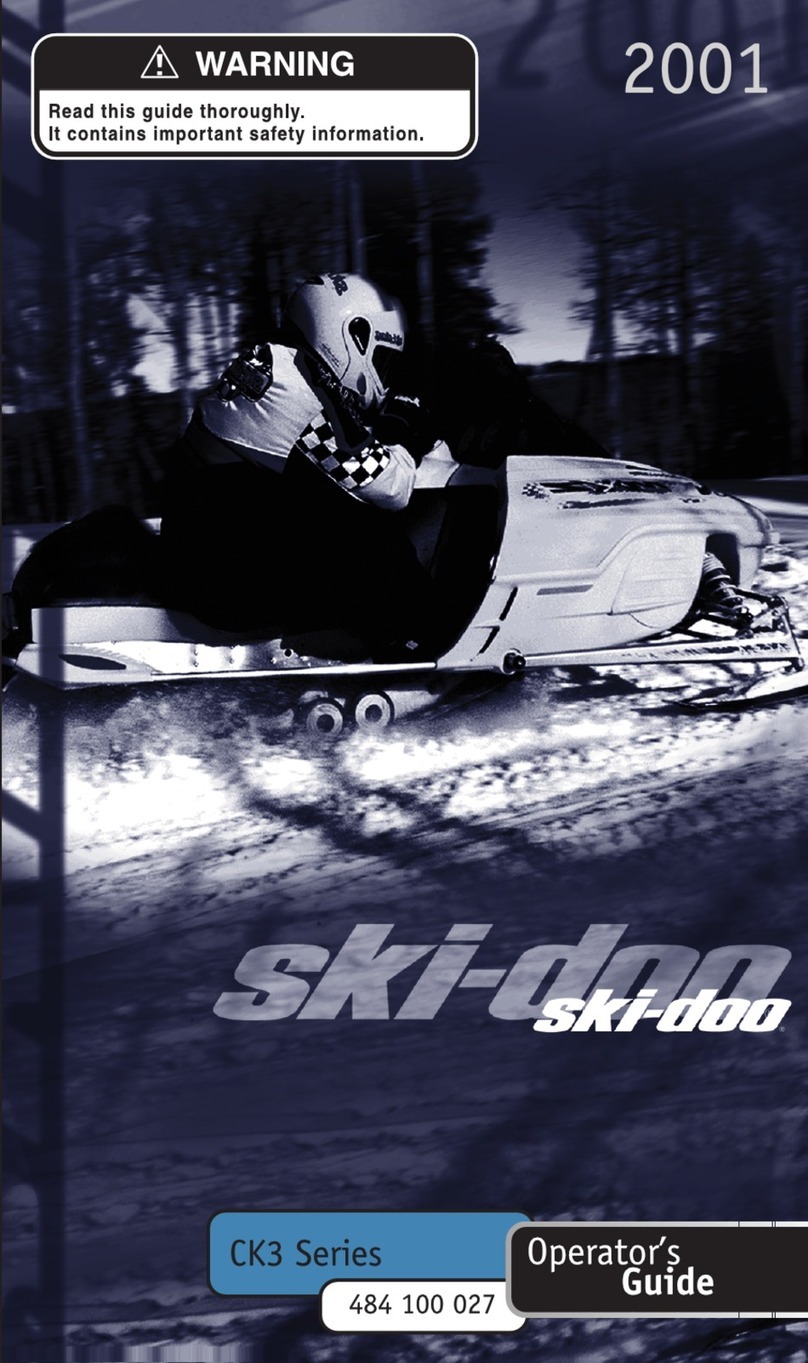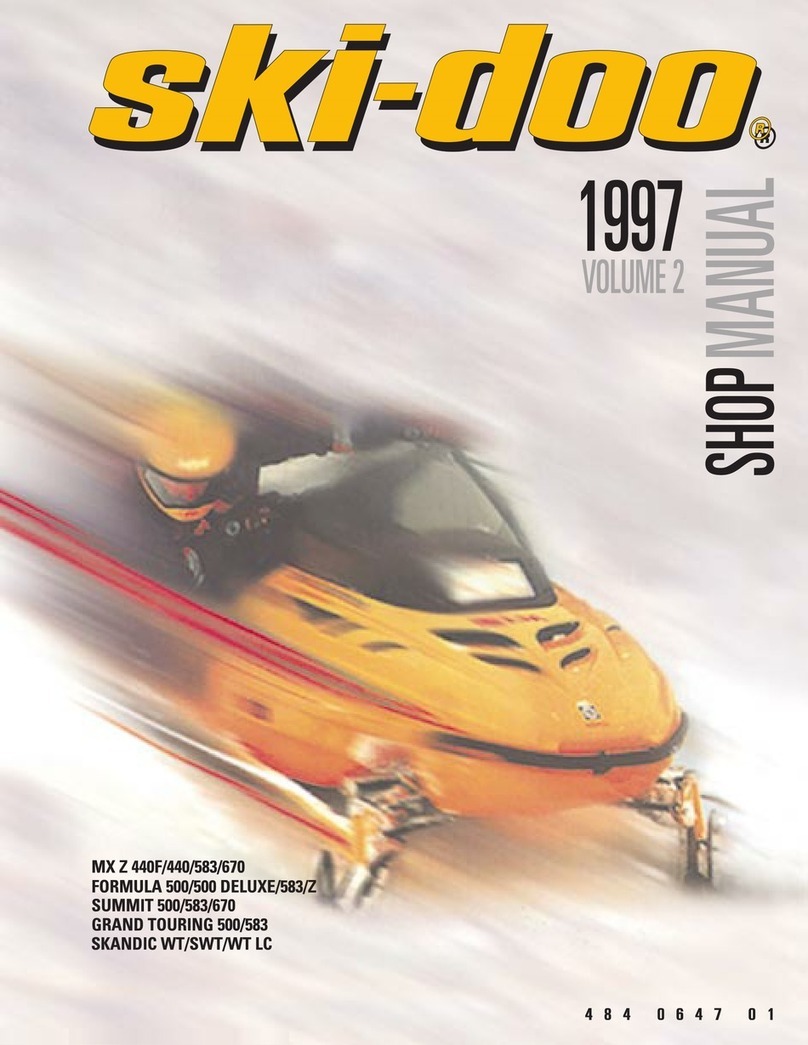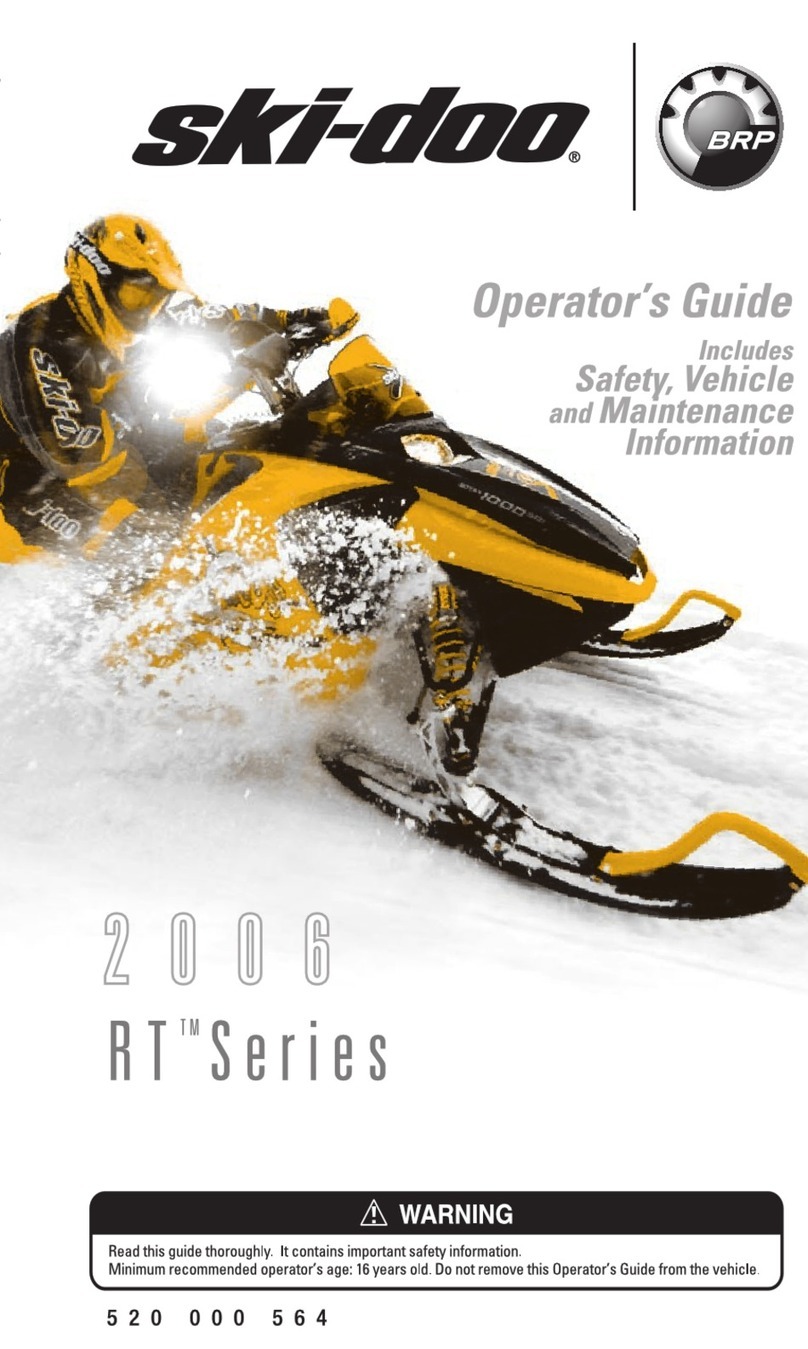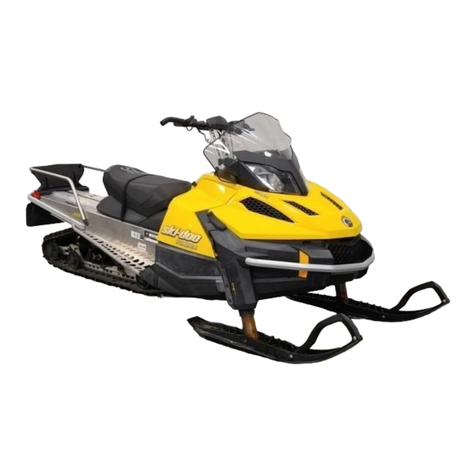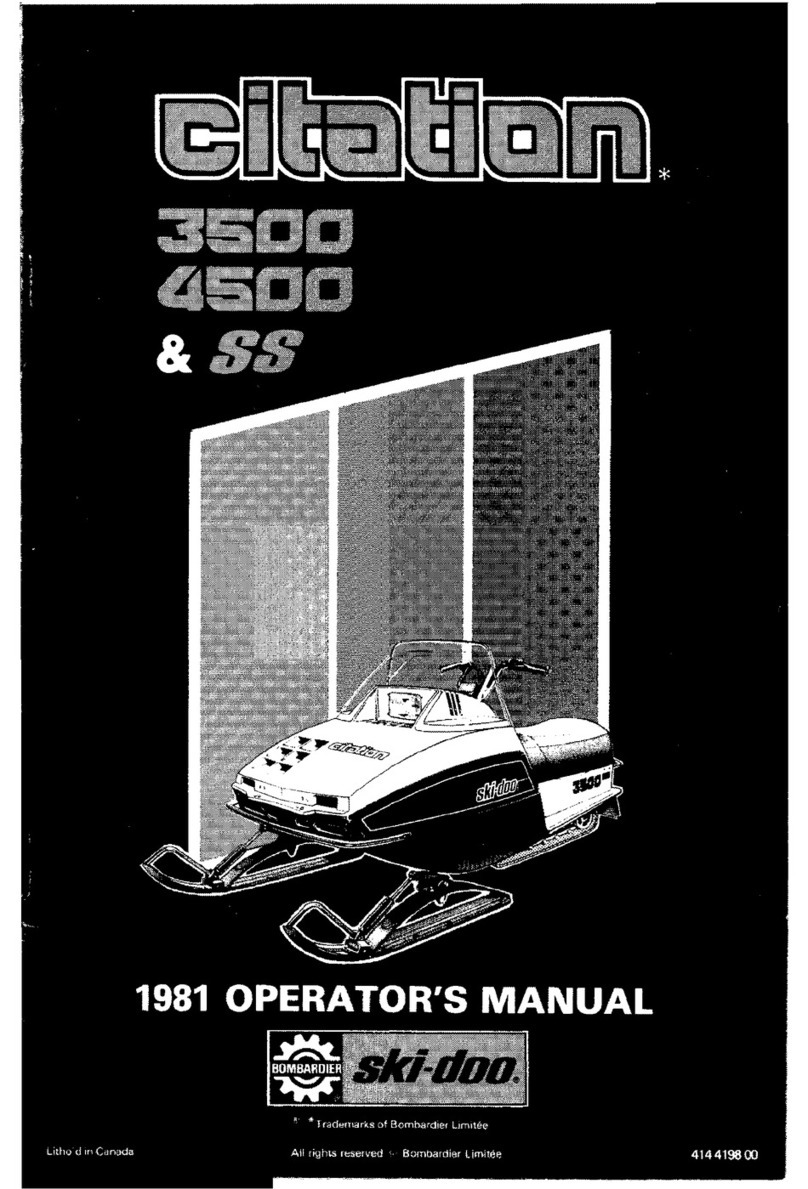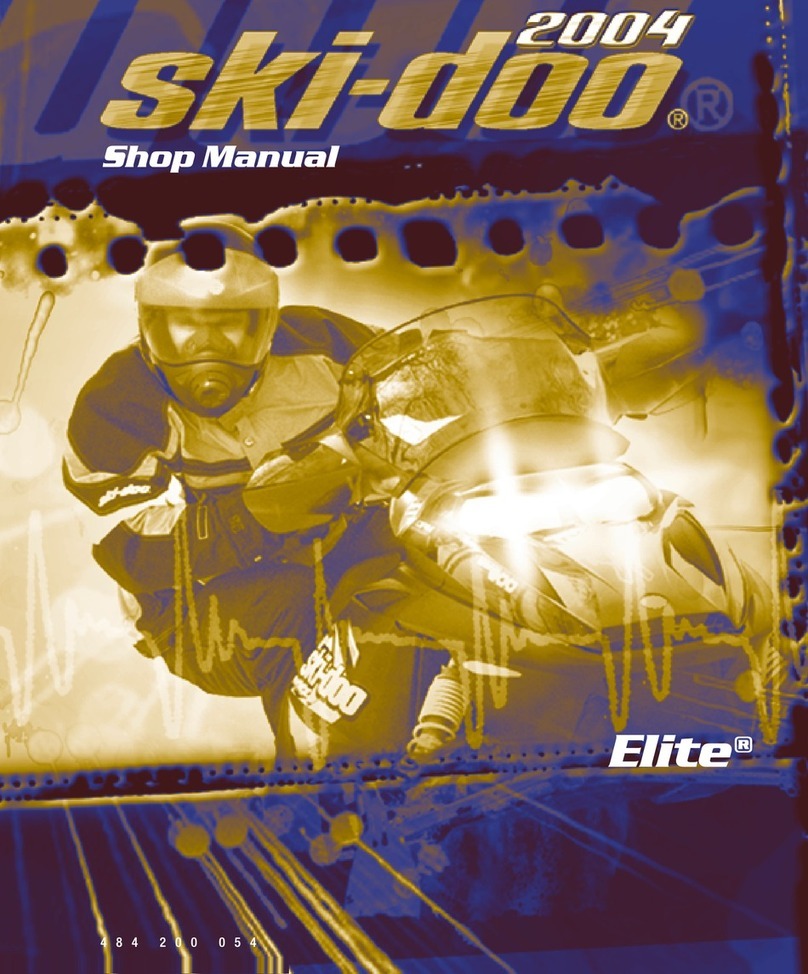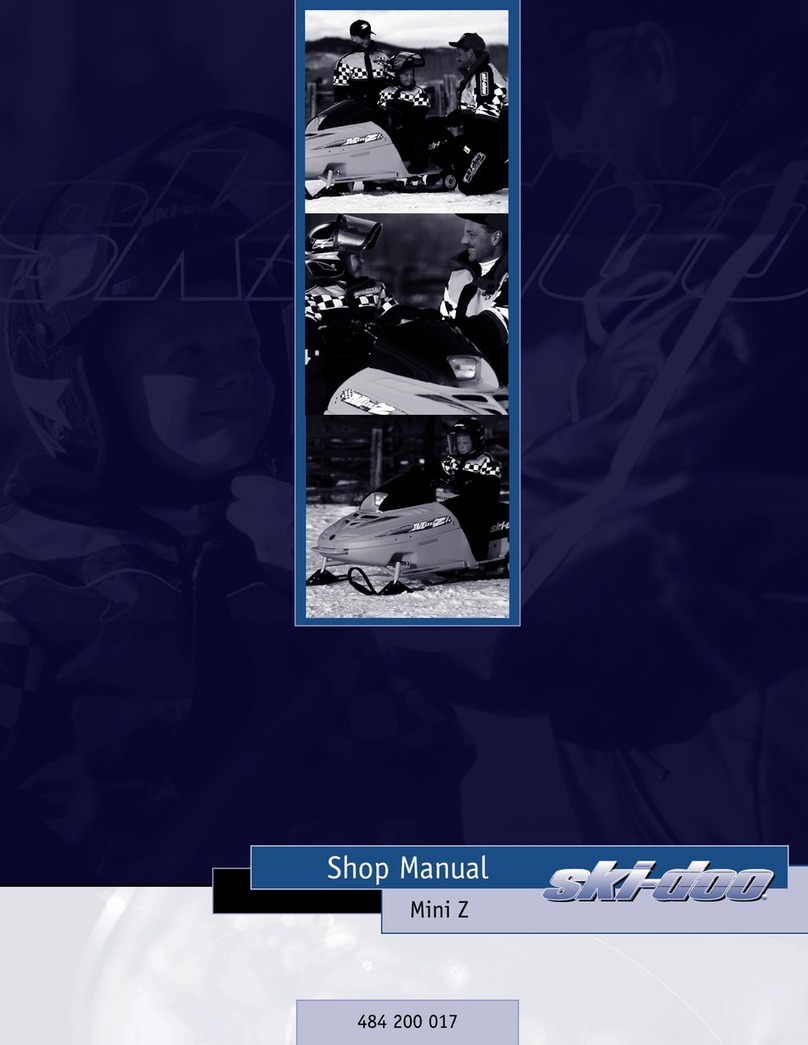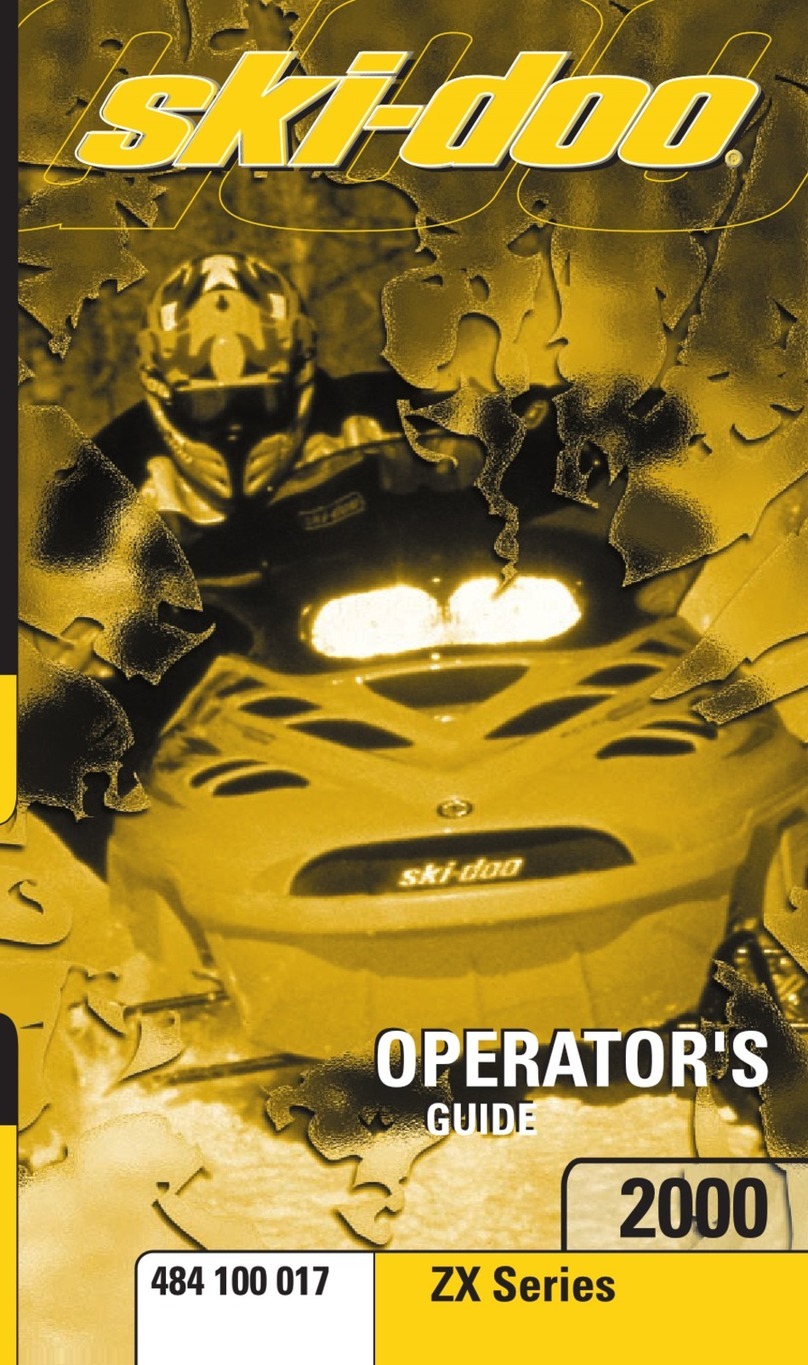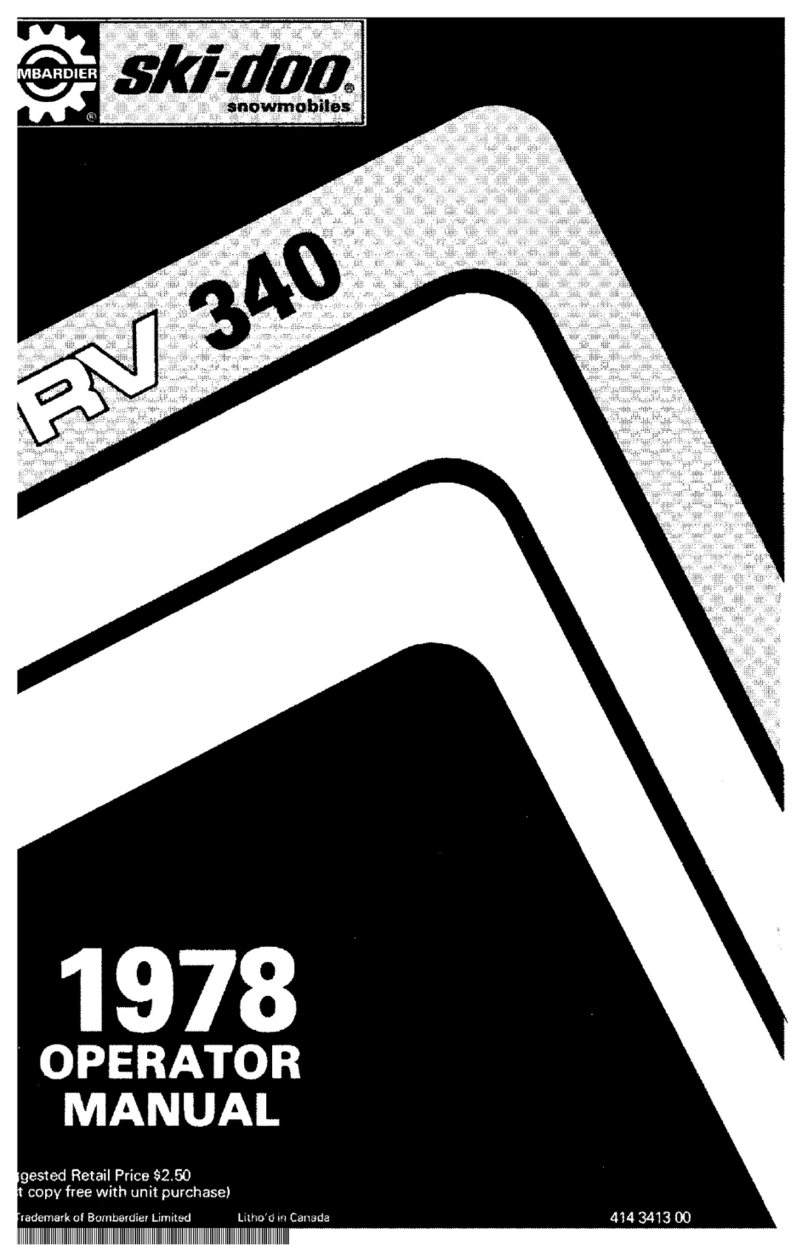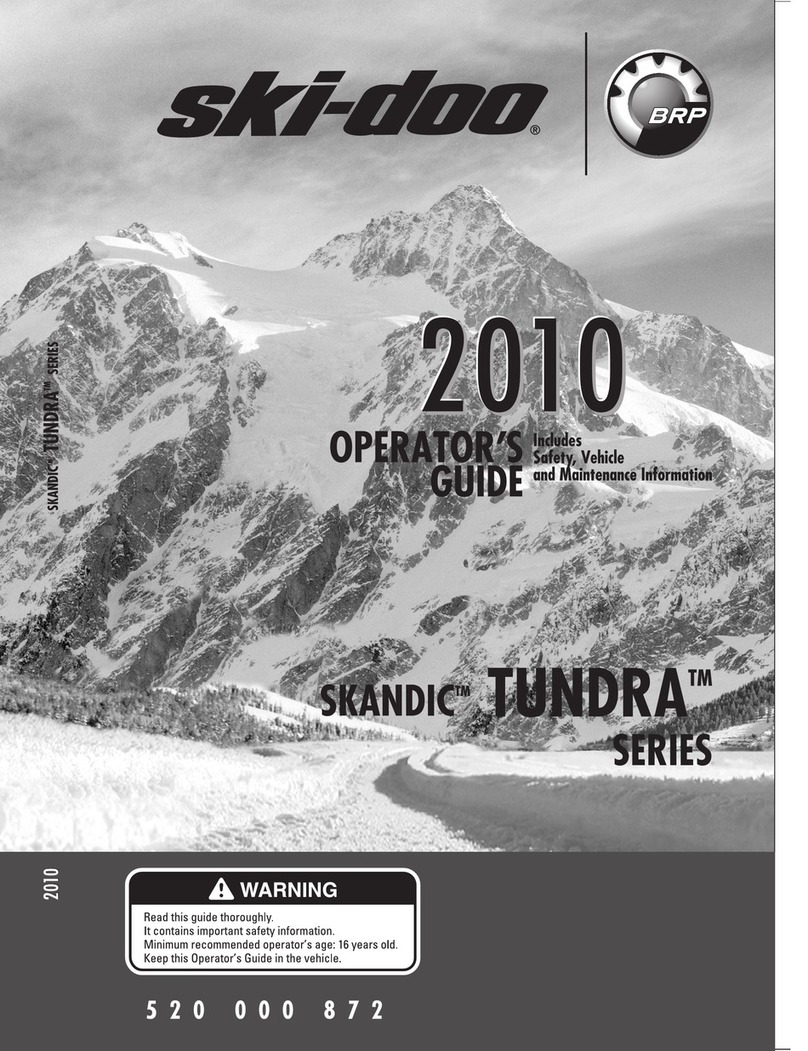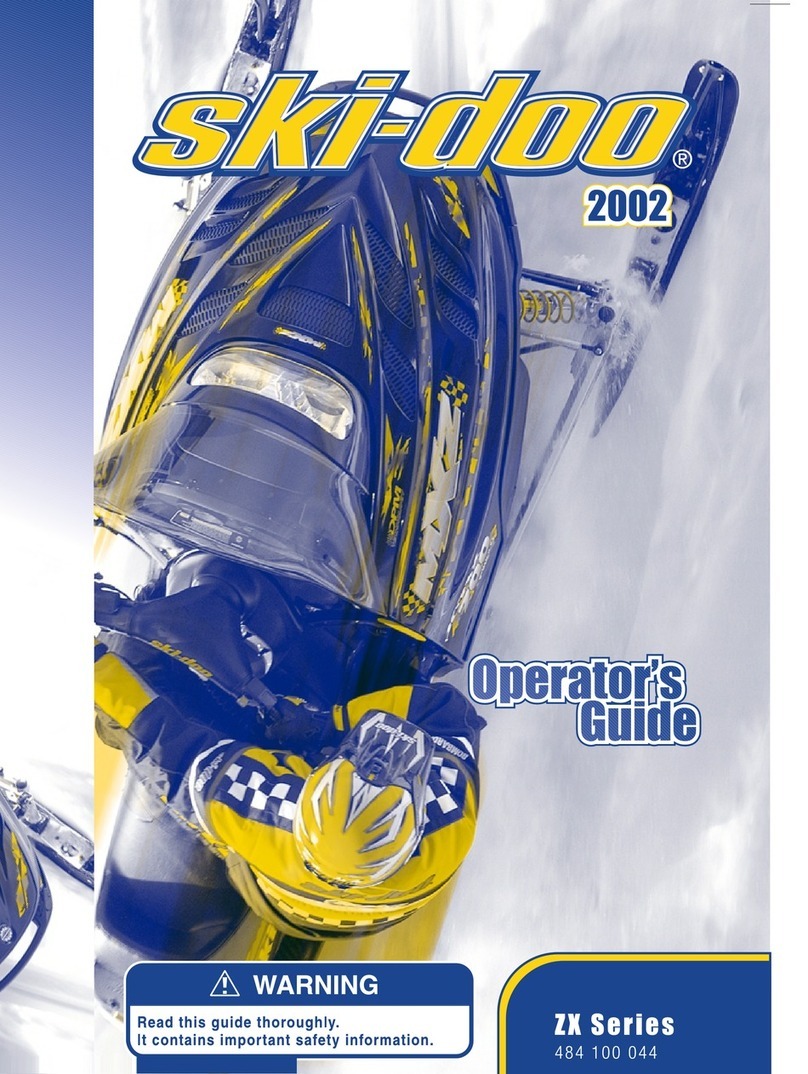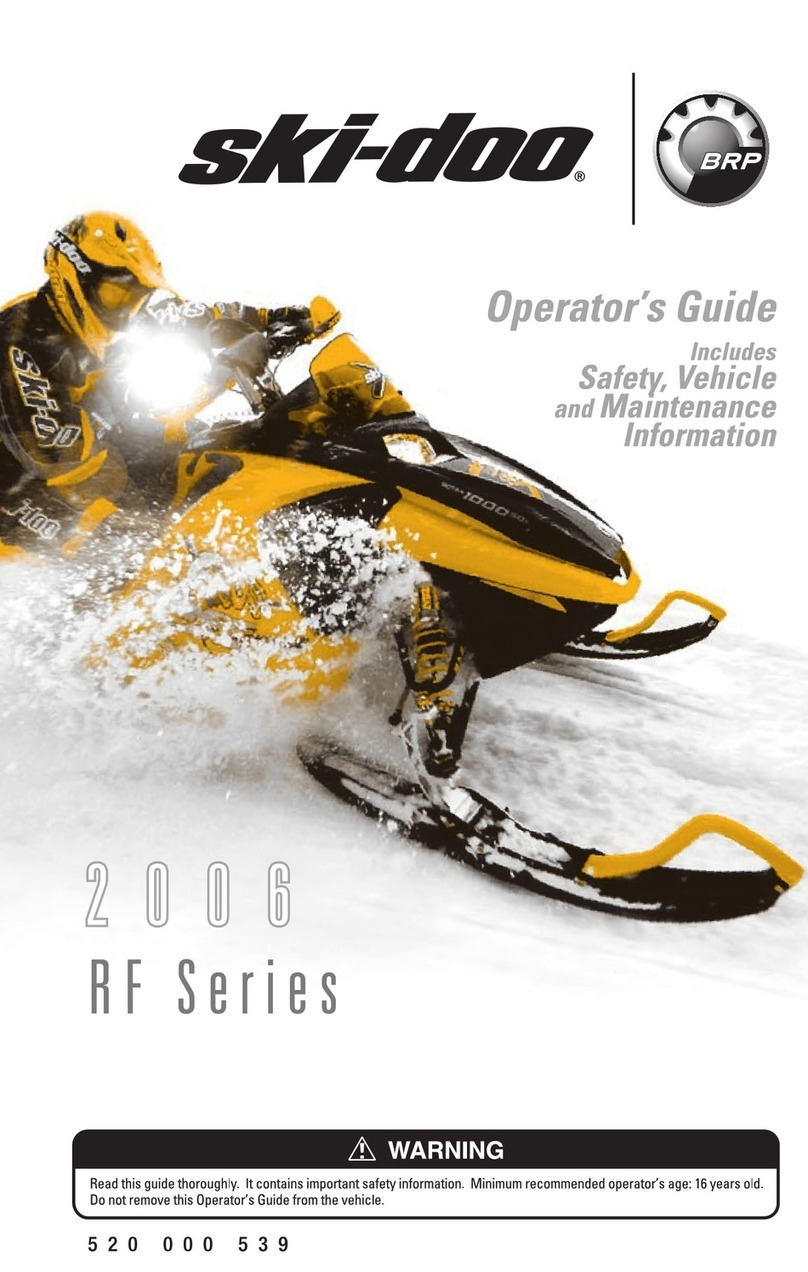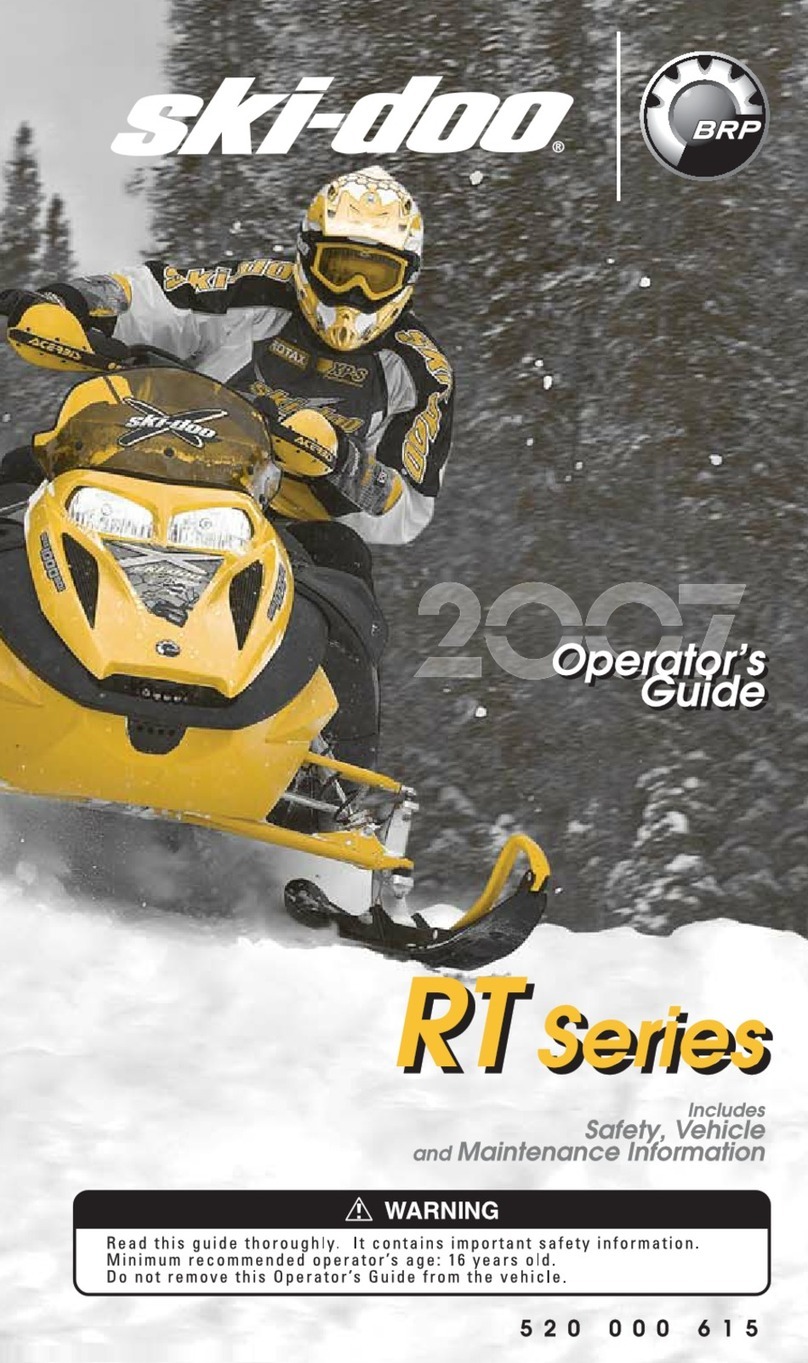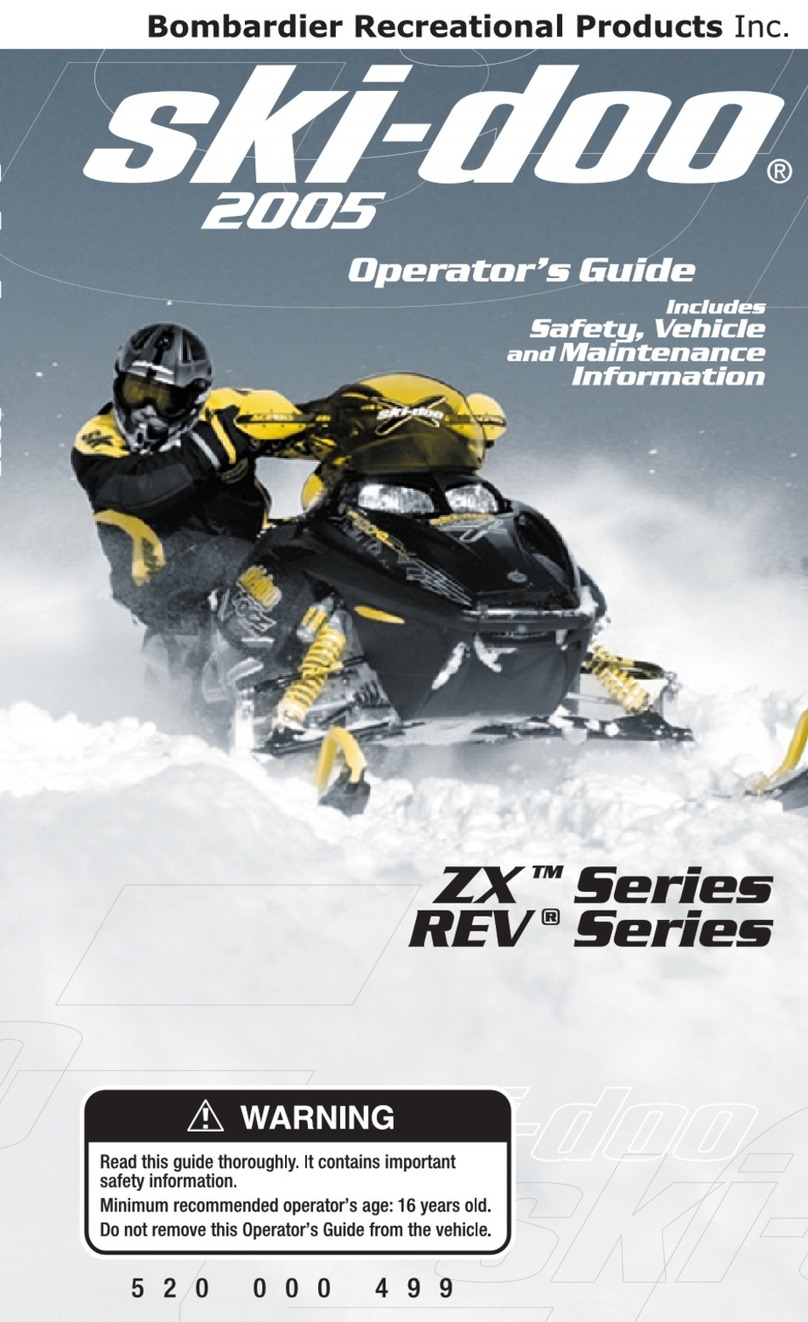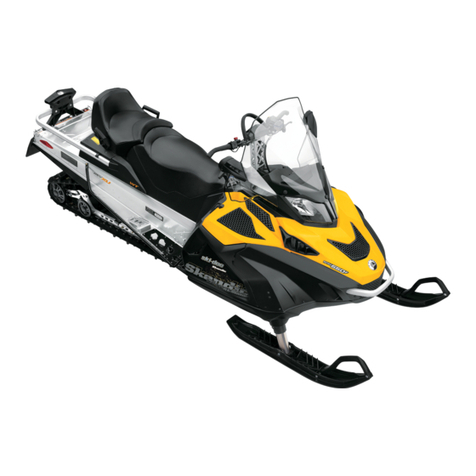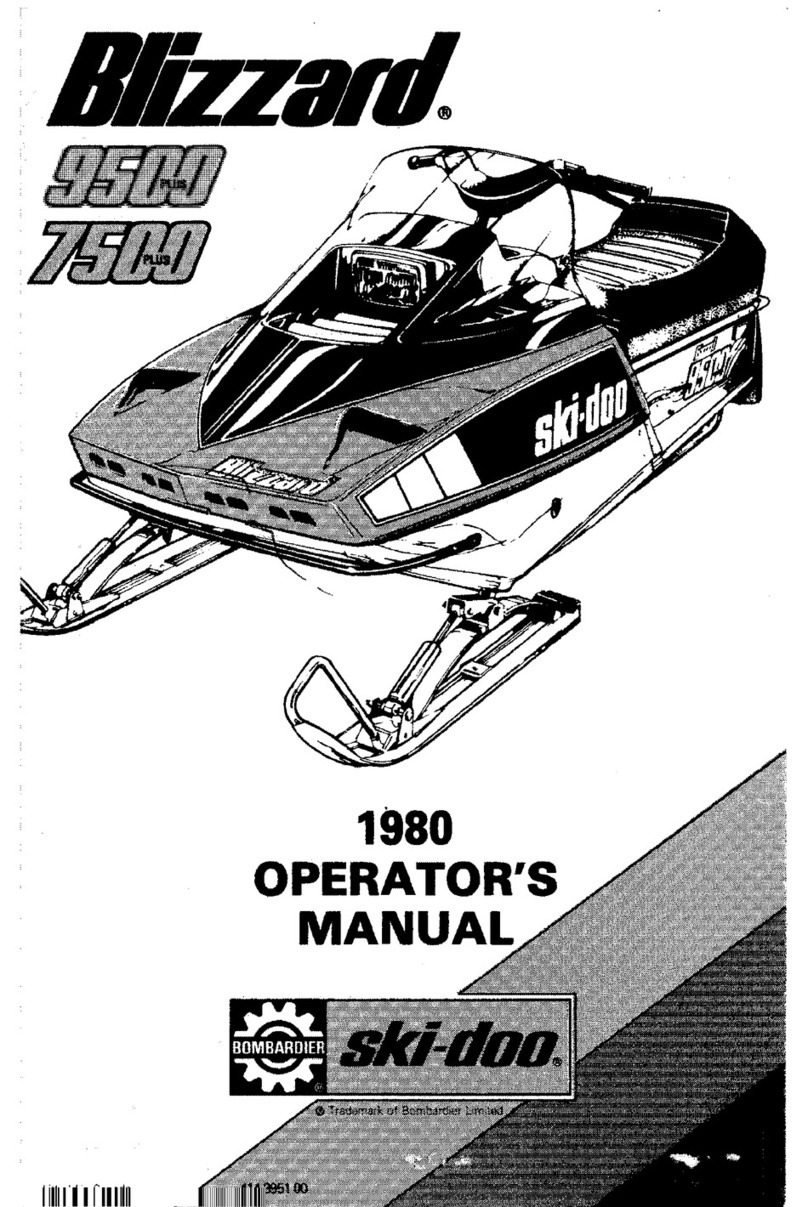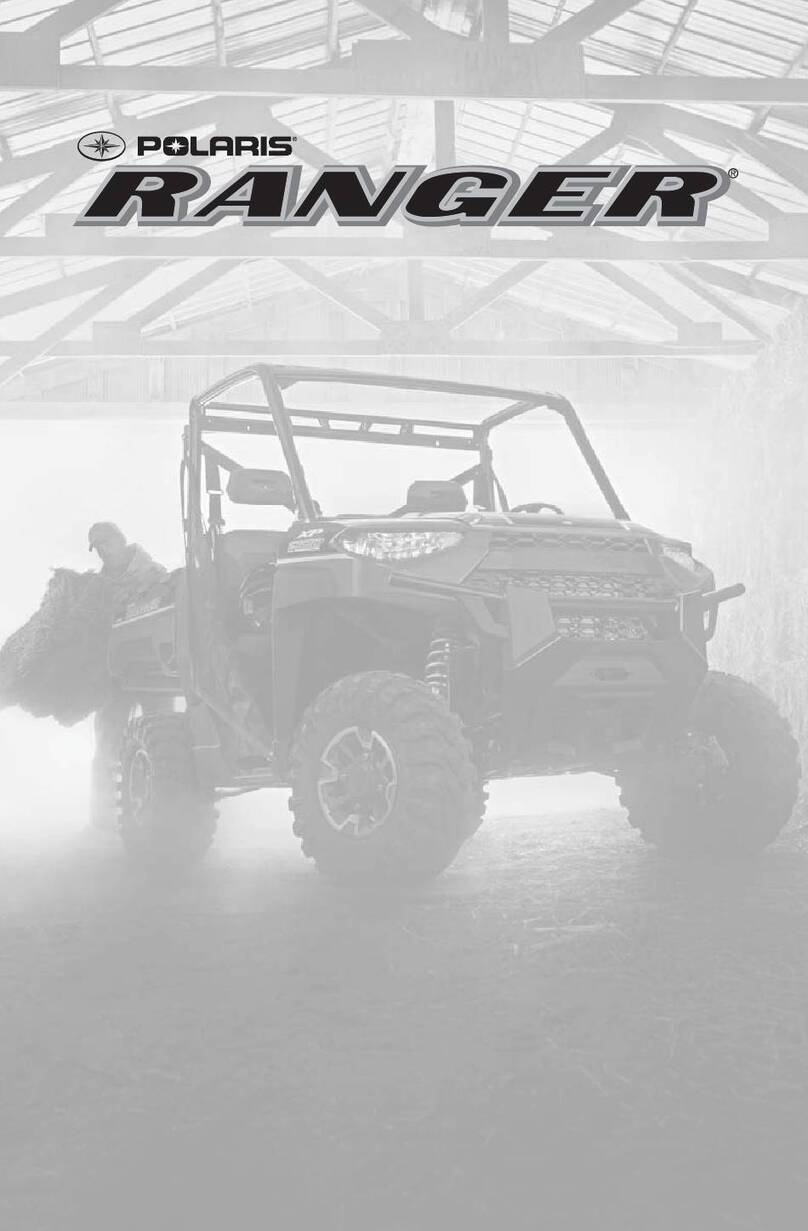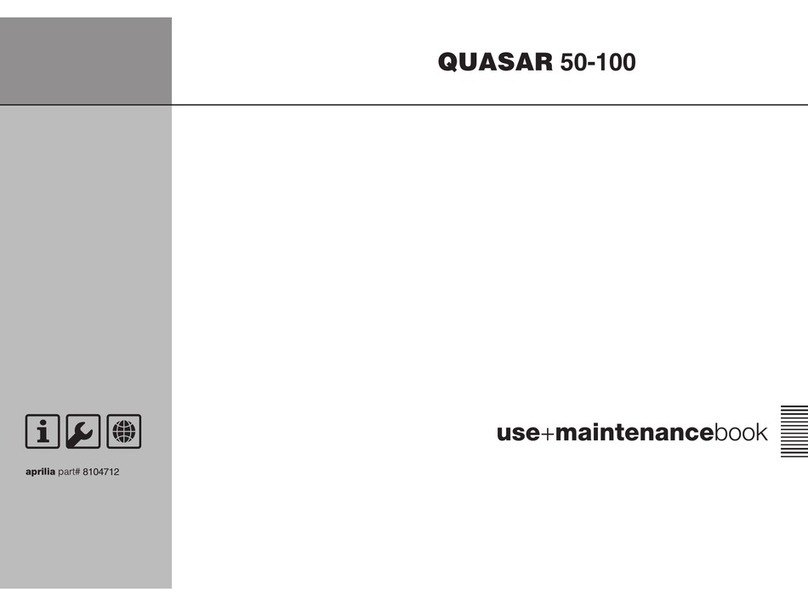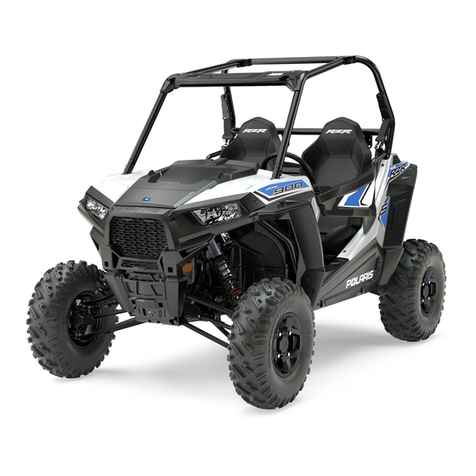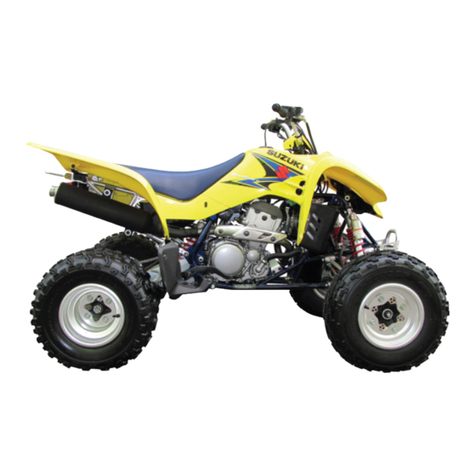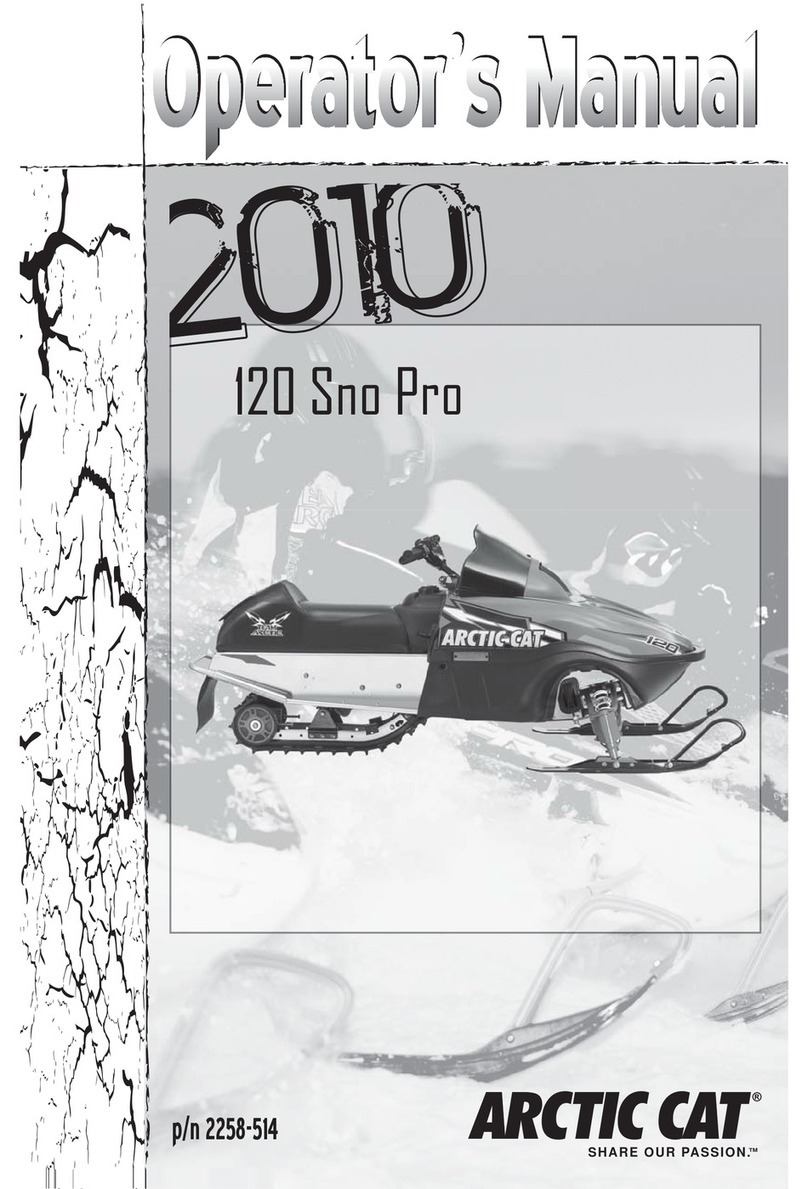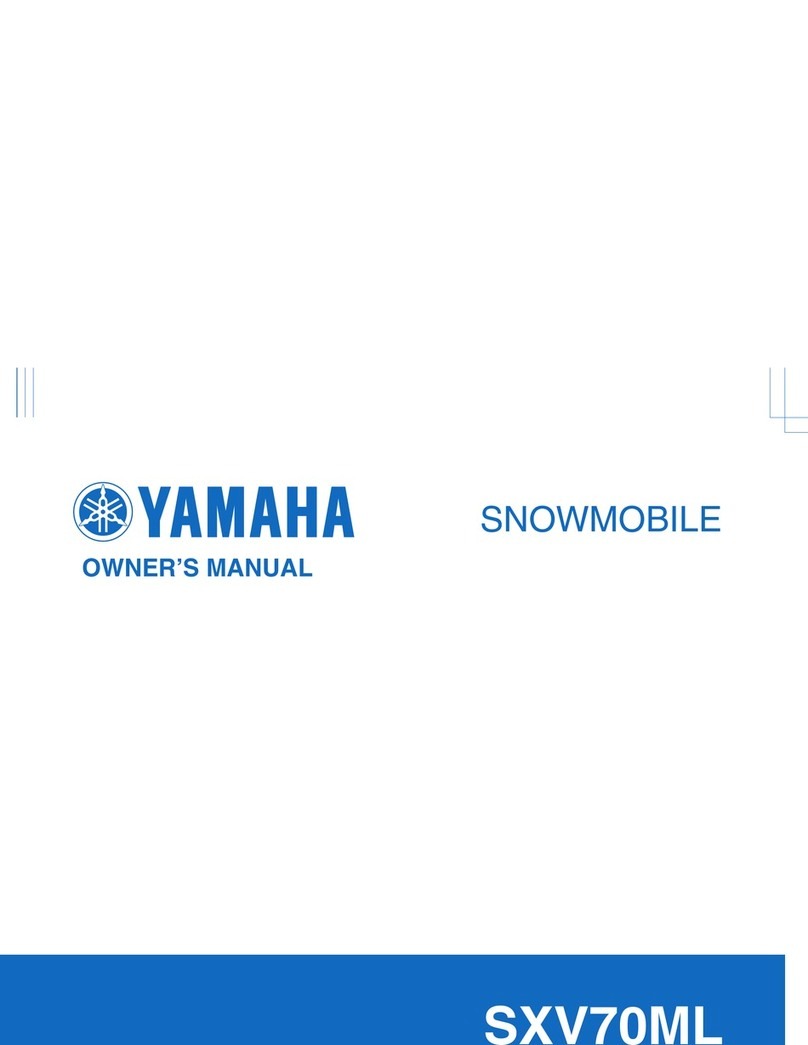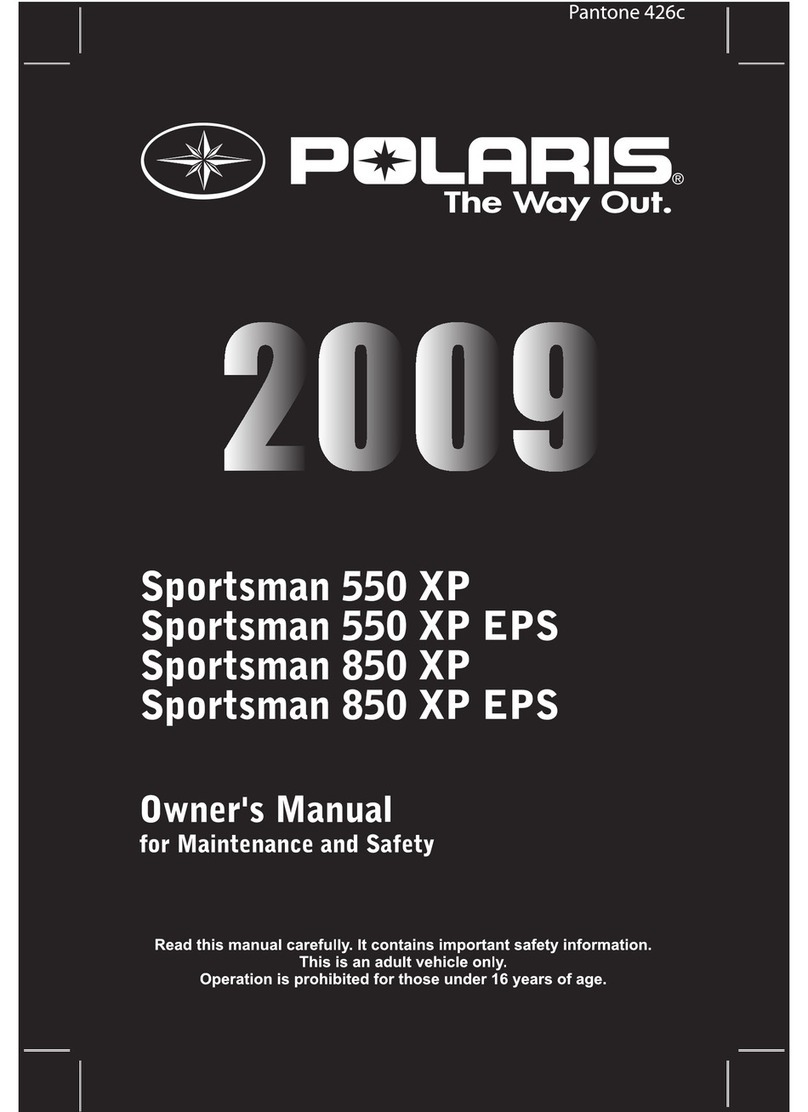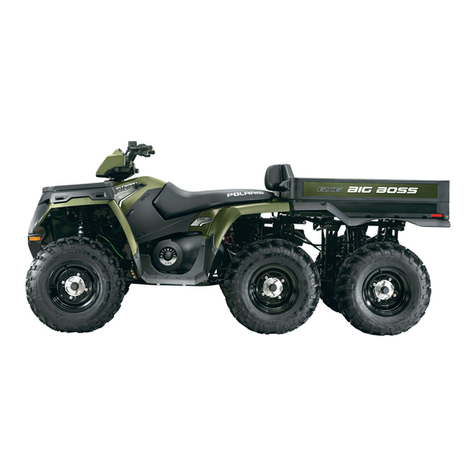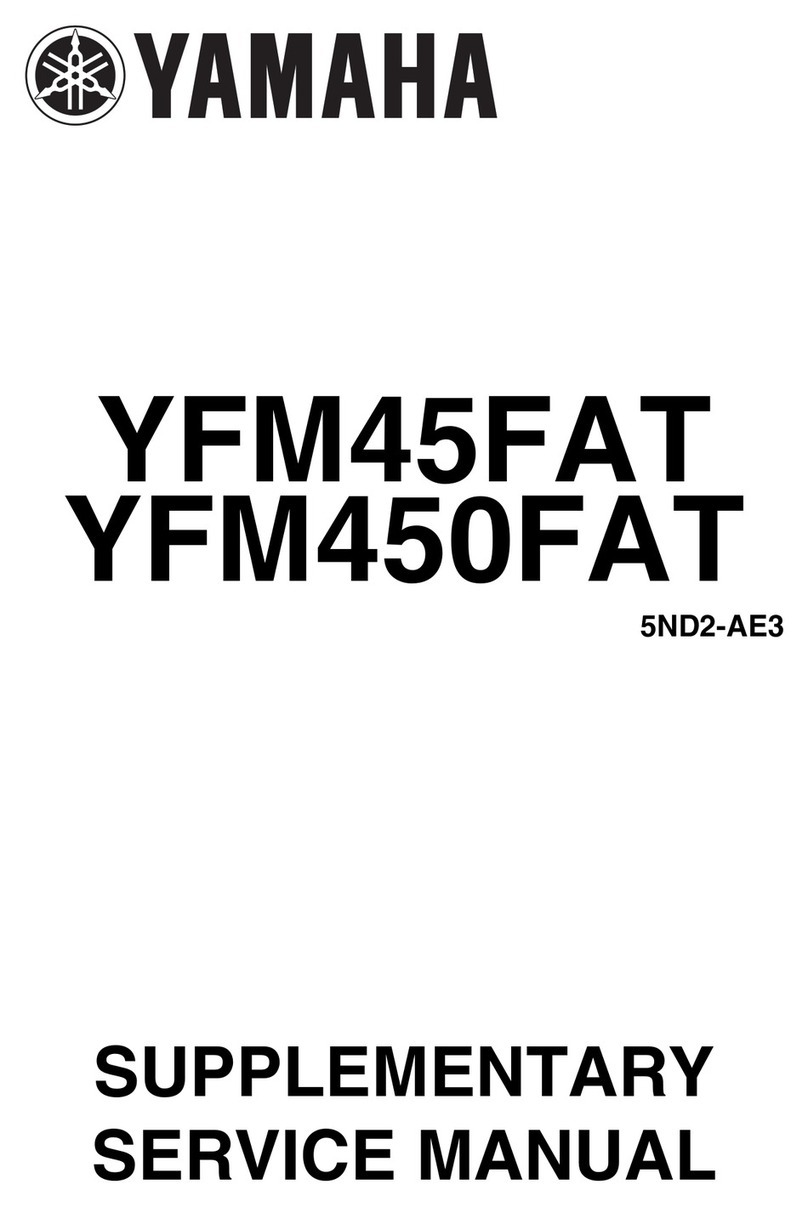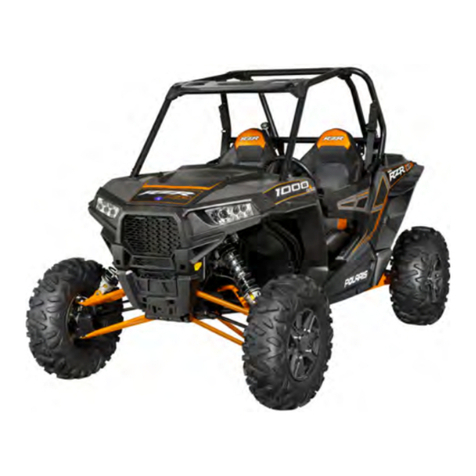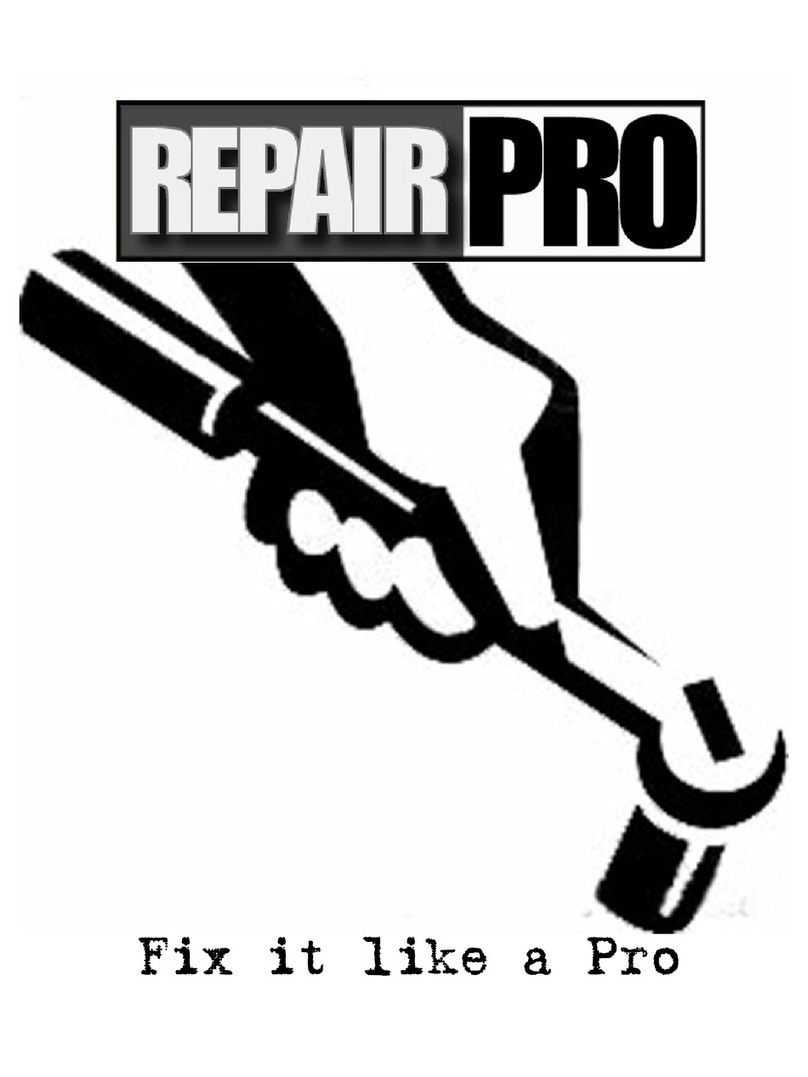
Although the mere reading of such information does not eliminate
the hazard, the understanding and application of the information will
promote the correct use of the vehicle.
Your dealer is committed to your satisfaction. He has taken train-
ing to perform the initial set-up and inspection of your snowmobile
as well as completed the final adjustment required to suit your spe-
cific weight and riding environment before you took possession. At
delivery, your dealer would have explained the snowmobile controls
and provided you with a brief explanation of the various suspension
adjustments. We trust you have taken full advantage of this!
At delivery, you were also informed of the warranty coverage and
have completed the Warranty Registration process.
The information and components/system descriptions contained in
this guide are correct at time of publication. BRP, however maintains
a policy of continuous improvement of its products without impos-
ing upon itself any obligation to install them on products previously
manufactured.
Because of its ongoing commitment to product quality and innova-
tion, BRP reserves the right at any time to discontinue or change
specifications, designs, features, models or equipment without in-
curring obligation.
The illustrations in this document show the typical construction of
the different assemblies and, in all cases, may not reproduce the full
detail or exact shape of the parts shown, however, they represent
parts which have the same or a similar function.
It is understood that this guide may be translated into another lan-
guage. In the event of any discrepancy, the English version shall
prevail.
Specifications are given in the SI metric system with the SAE U.S.
equivalent in parentheses. Where precise accuracy is not required,
some conversions are rounded off for easier use.
Most components of this snowmobile are built with parts dimen-
sioned in the metric system. Most fasteners are metric and must
not be replaced by customary fasteners or vice versa.
We recommend genuine BRP products for replacement parts and
accessories. They've been specially designed for your vehicle and
manufactured to meet BRP's demanding standards.
ASHOP MANUAL canbeobtainedforcompleteservice,mainte-
nance and more repair information.
For any questions pertaining to the warranty and its application, con-
sult the WARRANTY section in this guide, and/or an authorized SKI-
DOO dealer.
2__________________________
